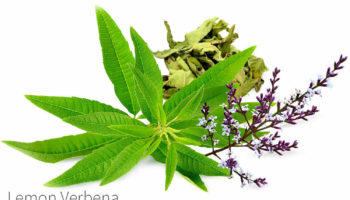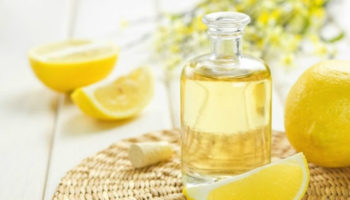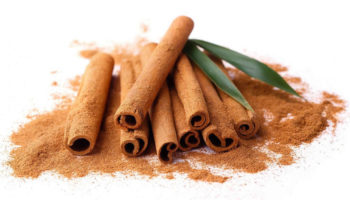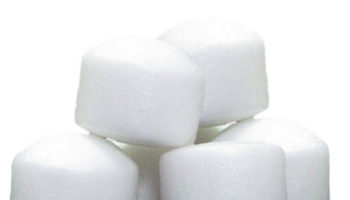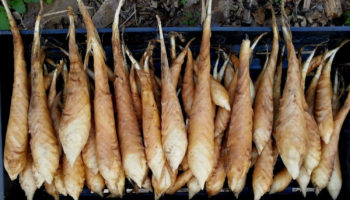Contents
What is maca root
Maca (Lepidium meyenii) is a Peruvian plant of the Brassicaceae (mustard) family cultivated for more than 2000 years, which grows exclusively in the central Andes between 4000 and 4500 m altitude 1. Preparations from maca root has been used for centuries in the Andes for nutrition and to enhance fertility and improve sexual function in humans and animals 1, 2, 3.
Figure 1. Maca root
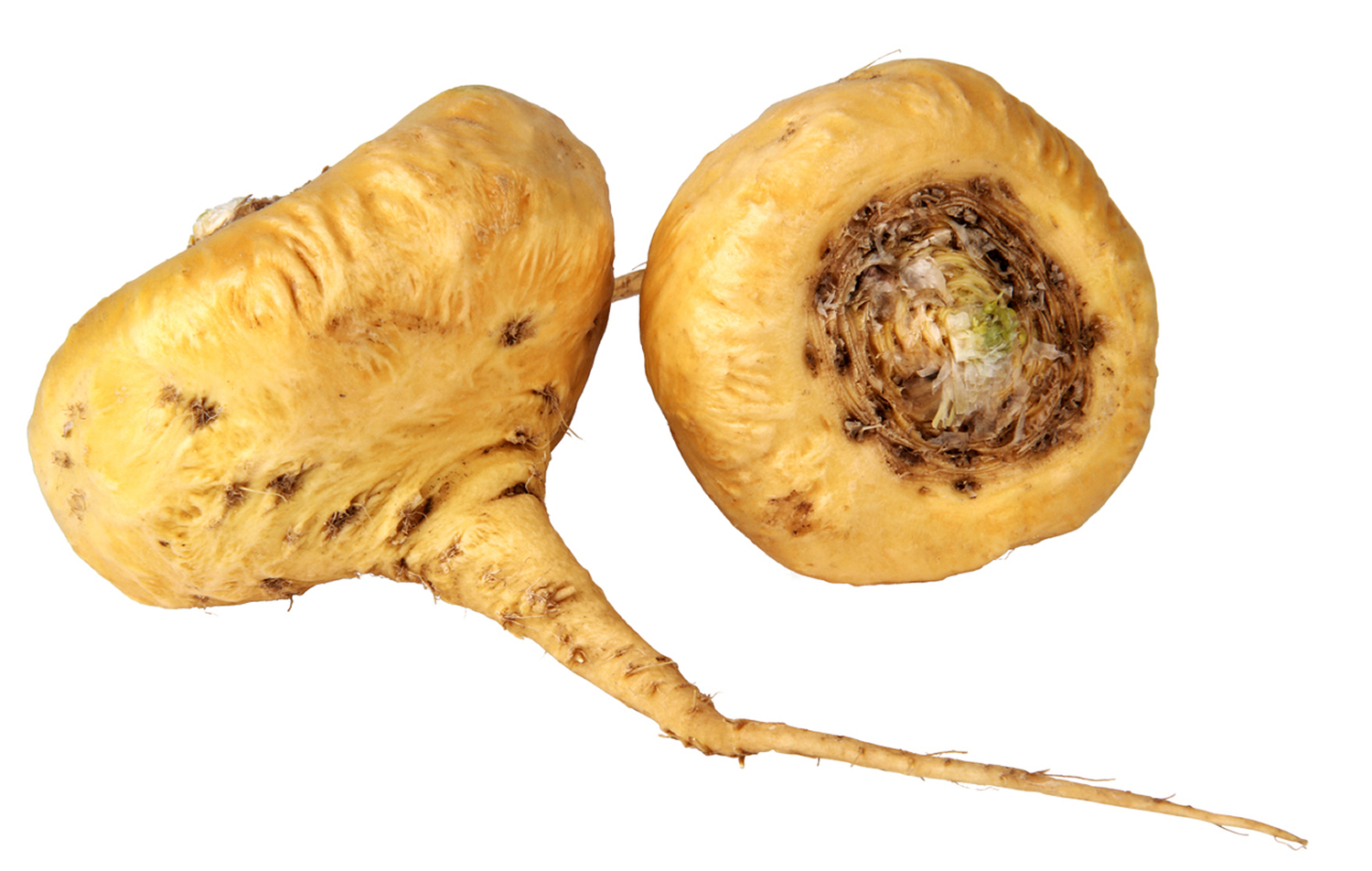
Preparations from the maca root have been reported to improve sexual function in healthy populations 2. Although maca is a plant extract and not a drug, it is one of the most commonly cited “natural drugs” on the Internet for the improvement of sexual desire 4. The hypothesis that maca root may be effective in improving sexual function is supported by several lines of evidence. Animal experiments suggest that maca has spermatogenic and fertility-enhancing activities, which are likely due to the phytosterols or phytoestrogens present in the maca 5. Several animal studies have shown that maca may improve sexual behaviour and enhance androgen-like effects in rats 6. Recent clinical trials have also suggested significant effects of maca for increasing sperm count and mobility and improving sexual function in humans 7, 8. The potential bioactive ingredients in maca include macaridine, macamides, macaene, gluosinolates, maca alkaloid, and maca nutrients 5. However, these data are insufficient for determining whether maca is clinically effective.
There are strong indications 9, 10 that the therapeutic properties of Peruvian Maca and its fertility-enhancing properties in particular, may be linked to high concentrations of Glucosinolates (benzyl and p-methoxybenzyl glucosinolate and their isothiocyanate derivatives), which represent one of the major functional groups of biologically active compounds in this herb 11, 10. It has been further observed that several Glucosinolates’ concentrations determined in hypocotyls of various coloured Maca phenotypes 12, may be linked to specific gender-and age-dependent physiological and therapeutic properties induced by oral administration of Maca preparations, as demonstrated in a series of studies on laboratory animals 13, and on humans using both male subjects 14 and pre- and post-menopausal women 15. It has been further found that the Maca phenotype characterised by the colour Red, has a selective therapeutic functionality affecting men after 50, with a capacity to prevent and reduce prostate hyperplasia 13. Black Maca phenotype was found as having a positive effect on sexual desire, aphrodisiac and fertility-enhancing properties in adult healthy men 16. On the other hand, Yellow based Peruvian Maca in a mix with other phenotypes in a traditionally-harvested Maca crop, had a positive hormone-balancing effect on pre- and post-menopausal women 17 thereby showing potential as a non-hormonal alternative to hormone replacement therapy (HRT) treatment.
As yet there is no clear understanding as to which precisely-defined chemical class or group of compounds, are actually responsible for the medicinal functionality of specific phenotypes of Peruvian Maca with their gender- and age-linked activity. Many of the reported compound classes in plants other that Maca have medicinal functionality such as Catechins from Green tea (Camellia sinensis) which are known for their high anti-oxidant value, Amides in Echinacea species which are associated with the immunomodulatory functions of this herb, Carbolines, containing well known MAO (monoaminooxidase) inhibitors having direct effect on hormone metabolism with various effects on sexual function in animals and Glucosinolates and their derivatives (isothiocyanates, sulphoraphane) in Maca and other Brassica species, which are generally acknowledged to be of therapeutic importance.
Few randomized clinical trials have tested the effects of maca root on sexual function. This review 4 found limited evidence from four small trials that suggested that maca is effective in improving sexual desire after at least 6 weeks. The extent to which the therapeutic effects of maca depend on the type of maca used and the amount of various constituents in the preparation is unclear. The total number of trials, the total sample size, and the average methodological quality of the primary studies were too limited to draw firm conclusions. The optimum dose of maca is unknown. Single-dose studies used extract quantities ranging from 1.5 g/day to 3.0 g/day. A study was not included in the systematic review because no placebo effect was assessed 18. In such study, maca was administered in two doses (1.5 g/day and 3–0 g/day) to patients with selective-serotonin reuptake inhibitor (a group of antidepressant)-induced sexual dysfunction. The Arizona Sexual Experience Scale (ASEX) and the Massachusetts General Hospital Sexual Function Questionnaire (MGH-SFQ) were used to measure sexual dysfunction. Subjects on 3.0 g/day maca had a significant improvement in ASEX and in MGH-SFQ scores, but subjects on 1.5 g/day maca did not. Libido improved significantly based on ASEX item number 1, but not by dosing groups. Maca was well tolerated 18. But the results of that study failed to show differences between the two doses 18. The review authors concluded that more rigorous studies are required to identify the optimal dose.
In another systematic review 19 on the effect of maca root and menopausal symptoms in women, found very few rigorous trials of maca for menopausal symptoms. The results of that systematic review provided limited evidence for the effectiveness of maca as a treatment for menopausal symptoms. The review authors stated that the total number of trials, the total sample size, and the average methodological quality of the primary studies, were too limited to draw firm conclusions. Furthermore, the safety of maca root has not been proven yet 19. They added that the efficacy of maca root on women menopausal symptoms and safety should be tested in larger studies.
Maca Root and Sexual Function
Sexual dysfunctions are highly prevalent in our society worldwide, and the occurrence of sexual dysfunctions increases directly with age for both men and women 20. They occur in 20–30% of men and 40–45% of women according to 18 descriptive epidemiological studies from around the world 21.
Most sexual problems relate to sexual desire (interest in sex) in both females and males and male erectile dysfunction (ED) 21. Interest in medicinal plants to treat sexual dysfunctions has increased in the last 20 years 22.
Maca has been described to improve sexual behavior in experimental animals, although conflictive results have been observed 23. Traditionally maca has been referred to as a plant to improve fertility and as an energizer. In a randomized study 24, researchers were unable to demonstrate effect of maca on penile erection in apparently healthy adult men after 12 weeks of treatment with gelatinized maca compared with results using placebo.
Recently, a systematic review has been performed on effect of maca on sexual function in humans 4. In that review, according to the authors only four randomized clinical trials met all the inclusion criteria.
According to the review, two randomized clinical trials suggested a significant positive effect of maca on sexual dysfunction or sexual desire in healthy menopausal women 25 or healthy adult men 26, respectively, while the other randomized clinical trials according to the reviewers failed to show any effects in healthy cyclists. However, analyzing results from such study, authors showed that maca extract significantly improved the self-rated sexual desire score compared to the baseline test and compared to the placebo trial after supplementation 27. The effect in this study was as early as 14 days of treatment which is significantly shorter that that showed with gelatinized maca in which effects were observed after 8 weeks of treatment.
A further randomized clinical trial assessed the effects of maca in patients with mild erectile dysfunction using the International Index of Erectile Dysfunction-5 and showed significant effects on subjective perception of general and sexual well-being 28.
Although evidence suggests an effect of maca on sexual desire and mild erectile dysfunction data also revealed that maca extract seems to have better effect 27 than gelatinized maca 26 and that of maca flour. The difference seems to be due to the fact that extract allow the concentration the secondary metabolites.
In summary, there is evidence that maca may improve sexual desire but is inconclusive an effect on erectile function.
Maca and Sperm Function
In a study in 9 apparently healthy men who had received maca for 4 months showed an increase in seminal volume, sperm count, and sperm motility 29. Serum hormone levels (LH, FSH, prolactin, estradiol, and testosterone) in men were not affected by treatment with maca 29.
Maca powder and maca extract were unable to activate androgen receptor-mediated transcription in prostate cancer cell lines 30 or in a yeast-based hormone-dependent reporter assay 25.
In summary, experimental and one clinical studies suggest that consumption of maca is associated with an increase in sperm count.
Maca as an Energizer
Maca has been shown to reduce scores in depression and anxiety inventories 18. A self-perception survey showed that maca acted as energizer compared with placebo in apparently healthy men 31.
Maca extract administration for 14 days significantly improved 40 km cycling time performance compared to the baseline test, but not compared to the placebo trial after supplementation.
In summary, scientific evidences suggest that maca may be an energizer.
Maca and Metabolic Syndrome
One study has been reported on effects of maca alone or combined with another supplements in patients with metabolic syndrome. The randomized placebo-controlled 90-day study assessed the effects of maca and yacon in combination with silymarin on plasma and lipoprotein lipids, serum glucose, and safety parameters in patients suffering from the metabolic syndrome.
No adverse effects were found in volunteers using silymarin (0.8 g/day), silymarin + yacon (0.8 + 2.4 g/day), and silymarin + maca (0.6 + 0.2 g/day). A moderate AST level and diastolic blood pressure increase was found in volunteers using maca (0.6 g/day) 32.
However, a randomized clinical trial in healthy men showed that gelatinized maca reduced systolic and diastolic blood pressure after 12 weeks of treatment 31. Moreover, maca significantly inhibited the hypertension relevant angiotensin I-converting enzyme (ACE) in vitro 33.
In a population traditionally consuming maca, systolic blood pressure was lower than in those not consuming maca 34. Similarly, AST (aspartate aminotransferase – is usually used to detect liver damage) levels were similar in those consuming and those not consuming maca 34.
Maca contains high amounts of potassium 35. Potassium is an important nutrient to reduce risk of hypertension 36 and as a primary metabolite may be useful in patients with hypertension. In addition other secondary metabolites may be also be active to reduce blood pressure 33.
Maca and Osteoarthritis
In a randomized double-blind study on 95 patients with osteoarthritis, a combination of Uncaria guianensis (cat’s claw; 300 mg) and maca (1,500 mg) was administered twice a day for 8 weeks and compared with a treatment with glucosamine sulfate. Both treatments substantially improved pain, stiffness, and functioning in the patients 37. However, as the study did not include a placebo control group, glucosamine effects remain unclear.
Maca root dangers and side effects
Maca has been used for centuries in the Central Andes of Peru, and no toxic effects have been reported if it was consumed after boiling 35. Previous review data on in vivo and in vitro studies with maca indicate that its use is safe 35. Further evidence shows that aqueous and methanolic extracts of maca do not display in laboratory test tube on liver cell toxicity study 38. Moreover, freeze-dried aqueous extract of maca (1 g/kg body weight) in mice did not reveal any toxic effect on the normal development of preimplanted mouse embryos 39.
Results in rats show that different types of maca (black, red, and yellow) have no acute toxicity at ≤17 g of dried hypocotyls/kg body weight. Rats treated chronically for 84 days with 1 g/Kg body weight showed no side effects and a histological picture of liver similar to that observed in controls 40. As usual doses in rats are 1-2 g/Kg body weight, it is suggested that maca is safe. Human consumption of ≤1 g/kg per day is considered safe, as well. However, as referred above in a study in patients with metabolic syndrome the administration of maca at a dose of 0.6 g/day for 90 days resulted in a moderate elevation of AST (aspartate aminotransferase – is usually used to detect liver damage) and diastolic arterial pressure 32. This has not been confirmed in other studies 31. Data on population of 600 subjects in the Peruvian central Andes showed that maca consumption was safety and that health status was improved 34.
- Quiroz C, Aliaga R. Maca (Lepidium meyenii Walp.) In: Hermann M, Hellers J, editors. Andean Roots and Tubers: Ahipa, Arracacha, Maca and Yacon. Promoting the Conservation and Use of Underutilized Neglected Crops. Vol. 21. Rome, Italy: International Plant Genetic Resources Institute; 1997. pp. 173–197.[↩][↩]
- Hudson T. Maca: new insights on an ancient plant. Integrative Medicine: A Clinician’s Journal. 2008;7(6):54–57.[↩][↩]
- Botanical therapies in sexual dysfunction. Tharakan B, Manyam BV. Phytother Res. 2005 Jun; 19(6):457-63. https://www.ncbi.nlm.nih.gov/pubmed/16114077/[↩]
- Shin B-C, Lee MS, Yang EJ, Lim H-S, Ernst E. Maca (L. meyenii) for improving sexual function: a systematic review. BMC Complementary and Alternative Medicine. 2010;10:44. doi:10.1186/1472-6882-10-44. https://www.ncbi.nlm.nih.gov/pmc/articles/PMC2928177/[↩][↩][↩]
- Wang Y, Wang Y, McNeil B, Harvey LM. Maca: an Andean crop with multi-pharmacological functions. Food Res Intern. 2007;40:783–792. doi: 10.1016/j.foodres.2007.02.005.[↩][↩]
- Effect of a lipidic extract from lepidium meyenii on sexual behavior in mice and rats. Zheng BL, He K, Kim CH, Rogers L, Shao Y, Huang ZY, Lu Y, Yan SJ, Qien LC, Zheng QY. Urology. 2000 Apr; 55(4):598-602. https://www.ncbi.nlm.nih.gov/pubmed/10736519/[↩]
- Lepidium meyenii (Maca) improved semen parameters in adult men. Gonzales GF, Cordova A, Gonzales C, Chung A, Vega K, Villena A. Asian J Androl. 2001 Dec; 3(4):301-3. https://www.ncbi.nlm.nih.gov/pubmed/11753476/[↩]
- Effect of Lepidium meyenii (Maca), a root with aphrodisiac and fertility-enhancing properties, on serum reproductive hormone levels in adult healthy men. Gonzales GF, Córdova A, Vega K, Chung A, Villena A, Góñez C. J Endocrinol. 2003 Jan; 176(1):163-8. https://www.ncbi.nlm.nih.gov/pubmed/12525260/[↩]
- Gonzales GF. Maca de la Tradición a la Ciencia. Lima: Universidad Peruana Cayetano Heredia; 2006. pp. 1–230.[↩]
- Li G, Ammermann U, Quiros Q. FGlucosinolate contents in Maca (Lepidium peruvianum Chacon) Seeds, Sprouts, Mature plants and Several Derived Commercial Products. Economic Botany. 2001;55(23):255.[↩][↩]
- Hajdu ZS, Lorantfy L, Jedlinszki N, et al. Quality Control of Maca-Containing (Lepidium Meyenii Walp.) Dietary Supplements. Acta. Alimentaria. 2015;44(3):461.[↩]
- Peruvian Maca (Lepidium peruvianum): (II) Phytochemical Profiles of Four Prime Maca Phenotypes Grown in Two Geographically-Distant Locations. O Meissner H, Mscisz A, Piatkowska E, Baraniak M, Mielcarek S, Kedzia B, Holderna-Kedzia E, Pisulewski P. Int J Biomed Sci. 2016 Mar; 12(1):9-24. https://www.ncbi.nlm.nih.gov/pmc/articles/PMC4841986/[↩]
- Dose-response effect of Red Maca (Lepidium meyenii) on benign prostatic hyperplasia induced by testosterone enanthate. Gasco M, Villegas L, Yucra S, Rubio J, Gonzales GF. Phytomedicine. 2007 Aug; 14(7-8):460-4. https://www.ncbi.nlm.nih.gov/pubmed/17289361/[↩][↩]
- Effect of Lepidium meyenii (MACA) on sexual desire and its absent relationship with serum testosterone levels in adult healthy men. Gonzales GF, Córdova A, Vega K, Chung A, Villena A, Góñez C, Castillo S. Andrologia. 2002 Dec; 34(6):367-72. https://www.ncbi.nlm.nih.gov/pubmed/12472620/[↩]
- Hormone-Balancing Effect of Pre-Gelatinized Organic Maca (Lepidium peruvianum Chacon): (III) Clinical responses of early-postmenopausal women to Maca in double blind, randomized, Placebo-controlled, crossover configuration, outpatient study. Meissner HO, Mscisz A, Reich-Bilinska H, Mrozikiewicz P, Bobkiewicz-Kozlowska T, Kedzia B, Lowicka A, Barchia I. Int J Biomed Sci. 2006 Dec; 2(4):375-94. https://www.ncbi.nlm.nih.gov/pmc/articles/PMC3614644/[↩]
- [Maca (Lepidium meyenii Walp), a review of its biological properties]. Gonzales GF, Villaorduña L, Gasco M, Rubio J, Gonzales C. Rev Peru Med Exp Salud Publica. 2014; 31(1):100-10. https://www.ncbi.nlm.nih.gov/pubmed/24718534/[↩]
- Therapeutic Effects of Pre-Gelatinized Maca (Lepidium Peruvianum Chacon) used as a Non-Hormonal Alternative to HRT in Perimenopausal Women – Clinical Pilot Study. Meissner HO, Reich-Bilinska H, Mscisz A, Kedzia B. Int J Biomed Sci. 2006 Jun; 2(2):143-59. https://www.ncbi.nlm.nih.gov/pmc/articles/PMC3614596/[↩]
- Dording CM, Fisher L, Papakostas G, et al. A double-blind, randomized, pilot dose-finding study of maca root (L. meyenii) for the management of SSRI-induced sexual dysfunction. CNS Neuroscience and Therapeutics. 2008;14(3):182–191. https://www.ncbi.nlm.nih.gov/pubmed/18801111[↩][↩][↩][↩]
- Maca (Lepidium meyenii) for treatment of menopausal symptoms: A systematic review. Maturitas. 2011 Nov;70(3):227-33. doi: 10.1016/j.maturitas.2011.07.017. Epub 2011 Aug 15. http://www.maturitas.org/article/S0378-5122(11)00262-3/fulltext[↩][↩]
- Derogatis LR, Burnett AL. The epidemiology of sexual dysfunctions. Journal of Sexual Medicine. 2008;5(2):289–300. https://www.ncbi.nlm.nih.gov/pubmed/18004994[↩]
- Lewis RW, Fugl-Meyer KS, Corona G, et al. Definitions/epidemiology/risk factors for sexual dysfunction. Journal of Sexual Medicine. 2010;7(4):1598–1607. https://www.ncbi.nlm.nih.gov/pubmed/20388160[↩][↩]
- MacKay D. Nutrients and botanicals for erectile dysfunction: examining the evidence. Alternative Medicine Review. 2004;9(1):4–16. http://www.altmedrev.com/publications/9/1/4.pdf[↩]
- Lentz A, Gravitt K, Carson CC, Marson L, Giuliano F. Acute and chronic dosing of Lepidium meyenii (Maca) on male rat sexual behavior. Journal of Sexual Medicine. 2007;4(2):332–340. https://www.ncbi.nlm.nih.gov/pubmed/17367428[↩]
- Gonzales GF. Ethnobiology and Ethnopharmacology of Lepidium meyenii (Maca), a Plant from the Peruvian Highlands. Evidence-based Complementary and Alternative Medicine : eCAM. 2012;2012:193496. doi:10.1155/2012/193496. https://www.ncbi.nlm.nih.gov/pmc/articles/PMC3184420/[↩]
- Brooks NA, Wilcox G, Walker KZ, Ashton JF, Cox MB, Stojanovska L. Beneficial effects of Lepidium meyenii (Maca) on psychological symptoms and measures of sexual dysfunction in postmenopausal women are not related to estrogen or androgen content. Menopause. 2008;15(6):1157–1162. https://www.ncbi.nlm.nih.gov/pubmed/18784609[↩][↩]
- Gonzales GF, Córdova A, Vega K, et al. Effect of Lepidium meyenii (MACA) on sexual desire and its absent relationship with serum testosterone levels in adult healthy men. Andrologia. 2002;34(6):367–372. https://www.ncbi.nlm.nih.gov/pubmed/12472620[↩][↩]
- Stone M, Ibarra A, Roller M, Zangara A, Stevenson E. A pilot investigation into the effect of maca supplementation on physical activity and sexual desire in sportsmen. Journal of Ethnopharmacology. 2009;126(3):574–576. https://www.ncbi.nlm.nih.gov/pubmed/19781622[↩][↩]
- Zenico T, Cicero AFG, Valmorri L, Mercuriali M, Bercovich E. Subjective effects of Lepidium meyenii (Maca) extract on well-being and sexual performances in patients with mild erectile dysfunction: a randomised, double-blind clinical trial. Andrologia. 2009;41(2):95–99. https://www.ncbi.nlm.nih.gov/pubmed/19260845[↩]
- Gonzales GF, Córdova A, Gonzales C, Chung A, Vega K, Villena A. Improved sperm count after administration of Lepidium meyenii (maca) in adult men. Asian Journal of Andrology. 2001;3:301–304. https://www.ncbi.nlm.nih.gov/pubmed/11753476[↩][↩]
- Bogani P, Simonini F, Iriti M, et al. Lepidium meyenii (Maca) does not exert direct androgenic activities. Journal of Ethnopharmacology. 2006;104(3):415–417. https://www.ncbi.nlm.nih.gov/pubmed/16239088[↩]
- Gonzales GF. Biological effects of Lepidium meyenii, maca, a plant from the highlands of Peru. In: Singh VK, Bhardwaj R, Govil JN, Sharma RK, editors. Natural Products. Vol. 15. Houston, Tex, USA: Studium Press; 2006. pp. 209–234. (Recent Progress in Medicinal Plants).[↩][↩][↩]
- Valentová K, Stejskal D, Bartek J, et al. Maca (Lepidium meyenii) and yacon (Smallanthus sonchifolius) in combination with silymarin as food supplements: in vivo safety assessment. Food and Chemical Toxicology. 2008;46(3):1006–1013. https://www.ncbi.nlm.nih.gov/pubmed/18054420[↩][↩]
- Ranilla LG, Kwon YI, Apostolidis E, Shetty K. Phenolic compounds, antioxidant activity and in vitro inhibitory potential against key enzymes relevant for hyperglycemia and hypertension of commonly used medicinal plants, herbs and spices in Latin America. Bioresource Technology. 2010;101(12):4676–4689. https://www.ncbi.nlm.nih.gov/pubmed/20185303[↩][↩]
- Gonzales GF. MACA: Del alimento perdido de los Incas al milagro de los Andes: Estudio de seguridad alimentaria y nutricional. Segurança Alimentar e Nutricional, Campinas. 2010;16-17(1):16–36.[↩][↩][↩]
- Valerio LG, Gonzales GF. Toxicological aspects of the South American herbs cat’s claw (Uncaria tomentosa) and maca (Lepidium meyenii): a critical synopsis. Toxicological Reviews. 2005;24(1):11–35. https://www.ncbi.nlm.nih.gov/pubmed/16042502[↩][↩][↩]
- Lee J-S, Park J, Kim J. Dietary factors related to hypertension risk in Korean adults-data from the Korean national health and nutrition examination survey III. Nutrition Research and Practice. 2011;5(1):60-65. doi:10.4162/nrp.2011.5.1.60. https://www.ncbi.nlm.nih.gov/pmc/articles/PMC3061272/[↩]
- Mehta K, Gala J, Bhasale S, et al. Comparison of glucosamine sulfate and a polyherbal supplement for the relief of osteoarthritis of the knee: a randomized controlled trial [ISRCTN25438351]. BMC Complementary and Alternative Medicine. 2007;7:34. doi:10.1186/1472-6882-7-34. https://www.ncbi.nlm.nih.gov/pmc/articles/PMC2131759/[↩]
- Valentová K, Buckiová D, Křen V, Pěknicová J, Ulrichová J, Šimánek V. The in vitro biological activity of Lepidium meyenii extracts. Cell Biology and Toxicology. 2006;22(2):91–99. https://www.ncbi.nlm.nih.gov/pubmed/16528448[↩]
- D’Arrigo G, Benavides V, Pino J. Preliminary evaluation effect of Lepidium meyenii Walp on the embryo development of mouse. Revista Peruana de Biología. 2004;11:103–106.[↩]
- Gasco M, Aguilar J, Gonzales GF. Effect of chronic treatment with three varieties of Lepidium meyenii (Maca) on reproductive parameters and DNA quantification in adult male rats. Andrologia. 2007;39(4):151–158. https://www.ncbi.nlm.nih.gov/pubmed/17683465[↩]
